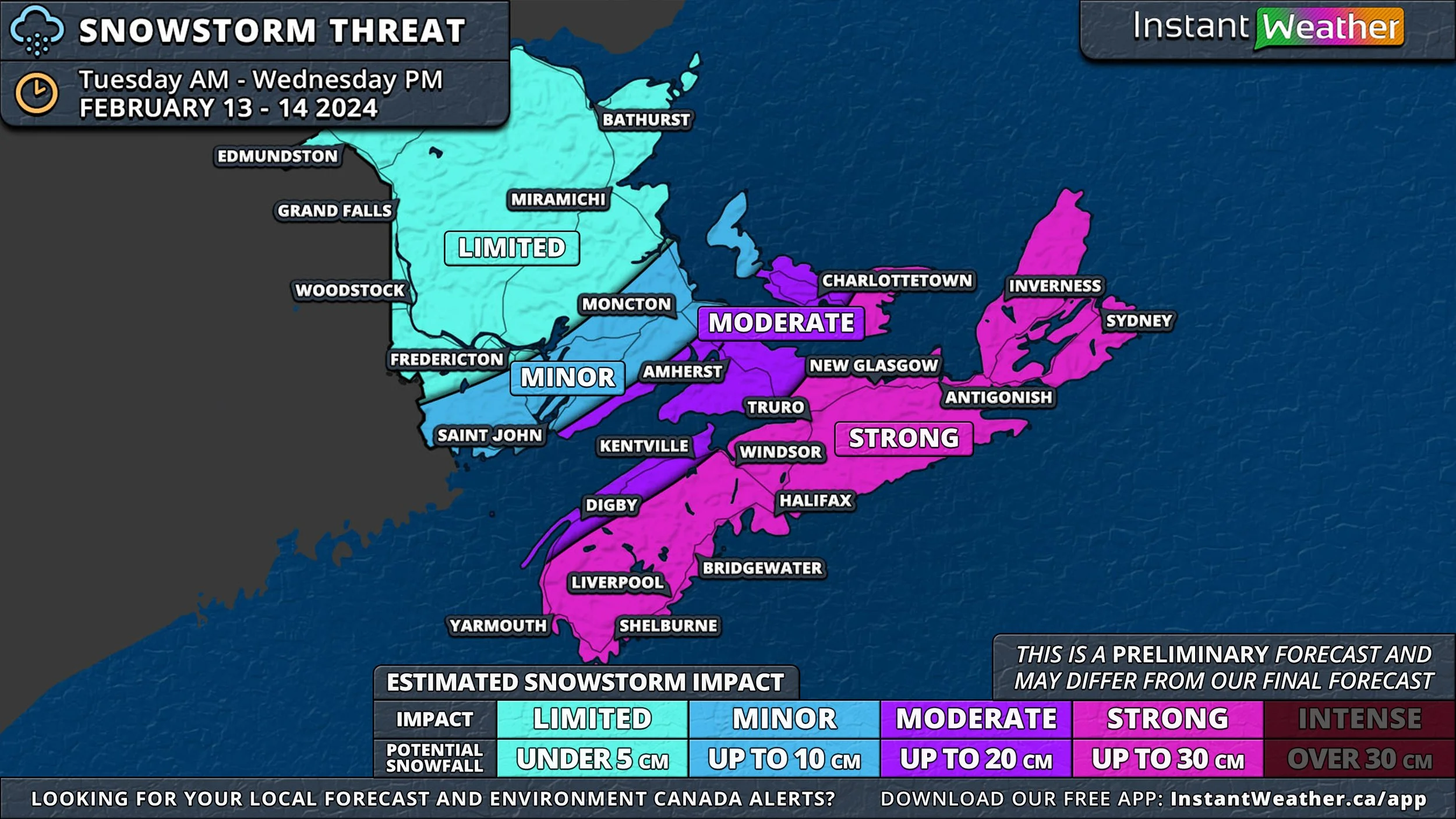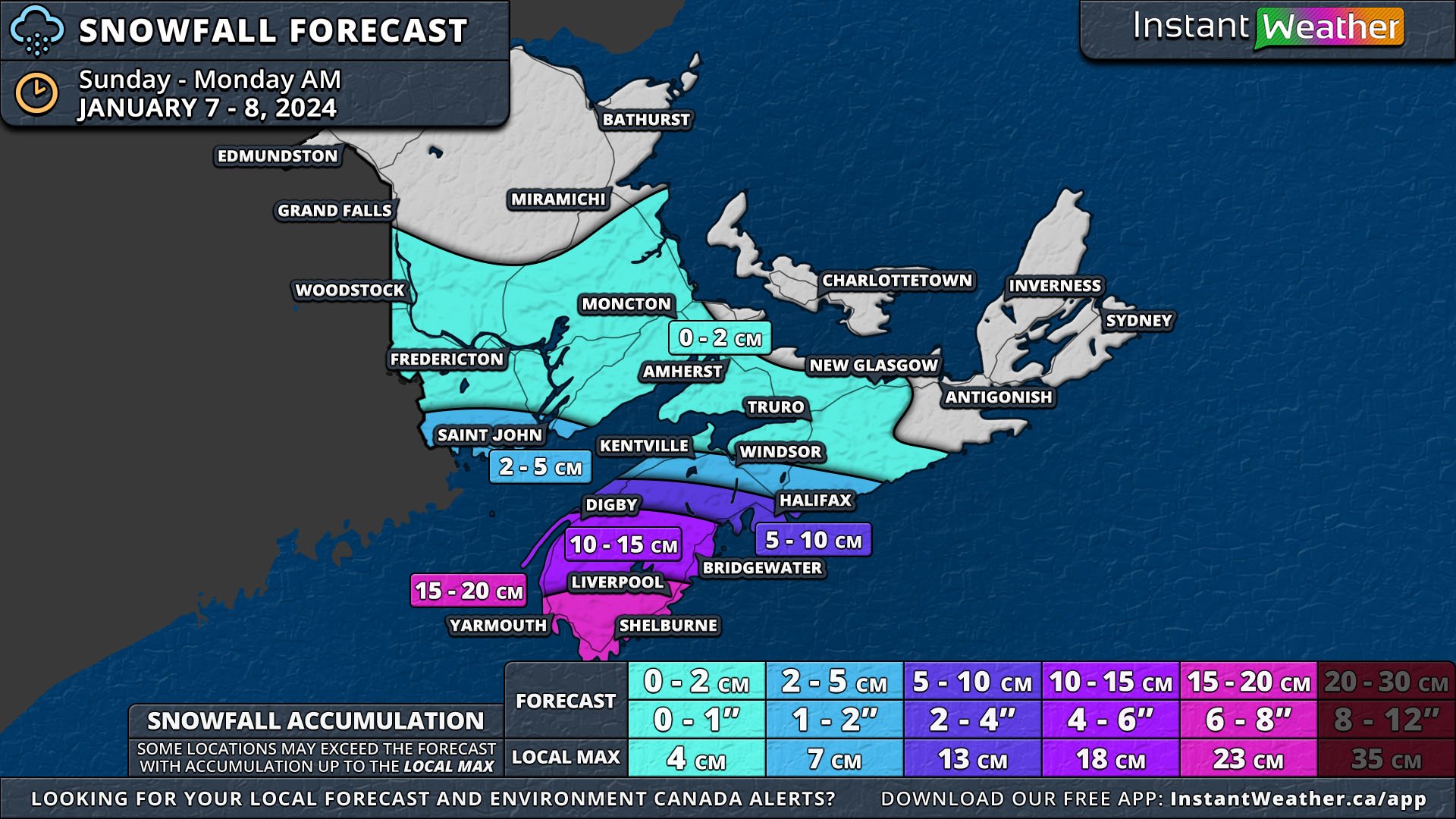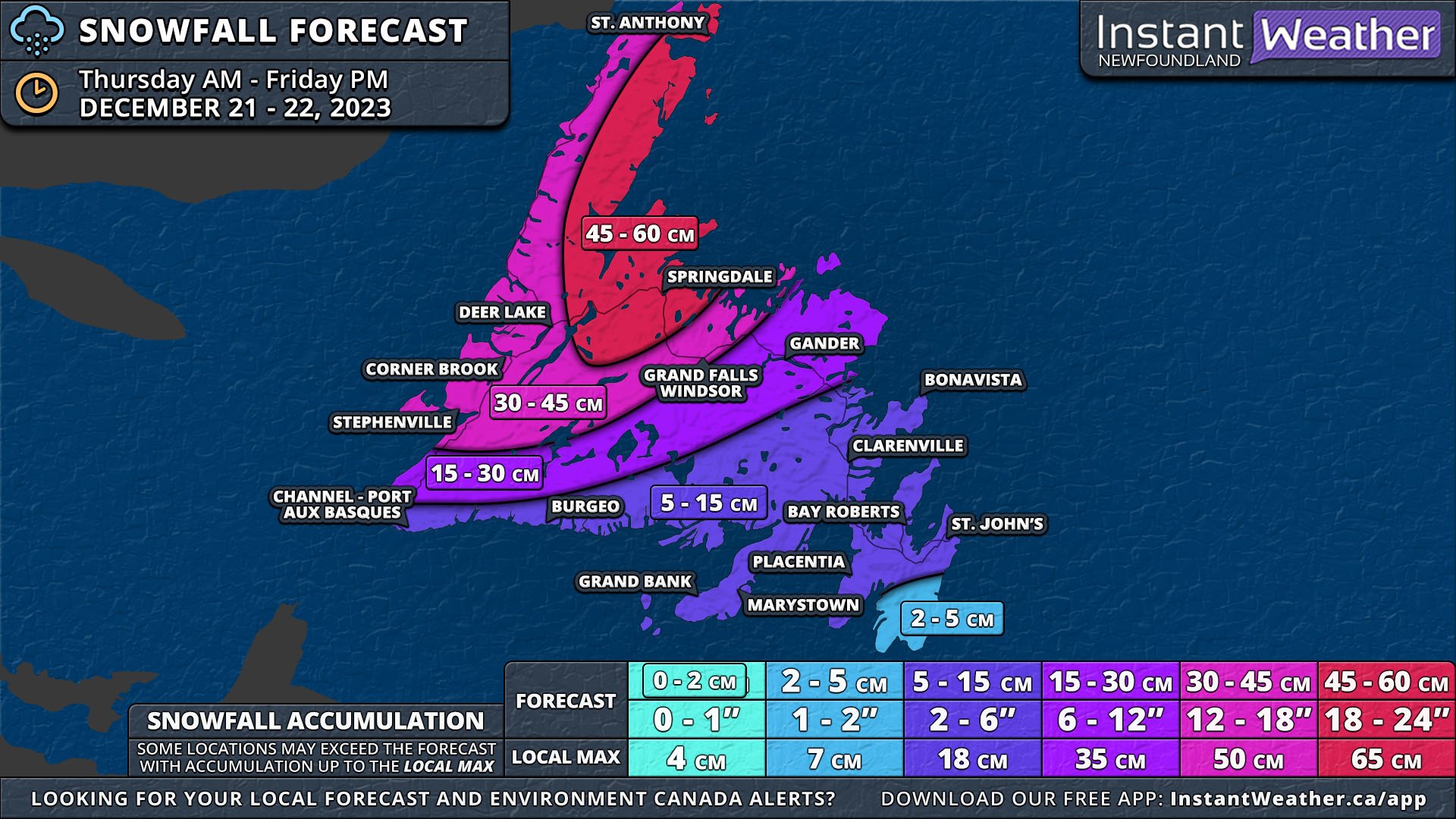Impactful Winter Storm Staying on Track to Bring Over 50cm of Snow, Significant Freezing Rain and Heavy Rain For the First Weekend of Spring in the Maritimes
/We’re approaching the first weekend of spring and what better way to celebrate than with an intense winter storm that could dump over 50cm of snow across parts of Northern and Central New Brunswick. The uncertainty regarding the storm’s track between major weather models has all but disappeared, with most models now favouring the northern path that is now expected to bring 50+cm of snow to Grand Falls, Woodstock, Bathurst, and through the Acadian Peninsula and Miramichi is still within the 30-50cm range. Further south, Fredericton can expect up to 30cm of snow mixed with ice pellets while Saint John and Moncton will receive 5-15cm along with rain and freezing rain. This region of 5-15cm of snowfall extends into Cumberland County in Nova Scotia and across much of Prince Edward Island, with the exception of Western Prince County, PEI where 15+cm of snow is likely.
New Brunswick
The snow will start making its way into the region from the southwest beginning mid-morning Saturday in Charlotte and York Counties and it will continue to spread across New Brunswick and into Prince Edward Island throughout the afternoon. Heavier snow is expected to follow this initial band starting in the late afternoon and early evening which will continue until Sunday morning. Parts of Northern and Central New Brunswick would be looking at 12 hours of snowfall rates of 2-4cm/hr, leading to rapid accumulations of 50+cm across a significant area. The snow will start to dissipate from west to east throughout Sunday morning.
Southern New Brunswick will see the snow transition to rain and freezing rain Saturday evening and continuing until Sunday morning when there will be a brief switch back to snow and a bit of freezing rain before the precipitation ends. This region could easily see 10-50mm of rain, with higher amounts found along the Fundy Coast, from this storm on top of 5-15cm of snow from Saturday morning and afternoon.
In between the bands of heavy snow and rain associated with this storm, there will be a band of freezing rain and ice pellets that will set up Saturday evening and make its way across Southern New Brunswick and into Western PEI through the overnight and continuing until Sunday morning. With the band of freezing rain becoming stationary for over 6 hours, ice will quickly begin to build-up and some areas could see accretions up to 10mm with locally higher amounts which is a significant amount of ice. The city of Fredericton, in particular, is in the area that will be hit the hardest. As the storm begins to exit the region, the band of freezing rain will shift southeastwards, bringing ice to the Fundy Coast, much of Eastern Nova Scotia and the rest of PEI.
This much ice build-up will be more than enough to create extensive damage to trees and power lines, resulting in widespread outages. Wind gusts will be in the 30-50km/h range on the backside of the storm, but temperatures are expected climb to a few degrees above freezing on Sunday afternoon across Southern New Brunswick which should assist in melting the ice. The freezing rain will be followed by a brief period of snow, which could be heavy and will bring snowfall totals up, especially in the area expecting 15-30cm.
Nova Scotia
The snow will start to spread into Western Nova Scotia early Saturday afternoon as the storm pushes into the region, however it will be light and short-lived flurries, leading to less than 5cm of accumulation across much of the province. There will be a break in precipitation for a couple of hours, at which time the temperature is expected to rise, and rain moves in beginning in the evening and continuing, heavy at times especially in the early morning hours, until mid-morning Sunday. We will start to see the rain move out of the region from west to east at that time and gradually ending across the province by the late evening Sunday with the possibility of a very brief transition over to freezing drizzle. Mainland Nova Scotia can expect widespread rainfall totals of 20-50mm while Cape Breton Island will see 10-30mm.
Prince Edward Island
In Prince Edward Island, the snow will start Saturday afternoon and last for several hours and resulting in 5-15cm across most of the province before switching to freezing rain and rain overnight. Prince County can expect upwards of 10mm of ice accretion and up to 20mm of rain while the rest of the Island may see light freezing drizzle along with 20-30mm of rain. The rain will continue into the morning and shortly after sunrise, there will be a transition back to snow from west to east that will last for a few hours as the storm makes its final push across the province before ending Sunday evening.































